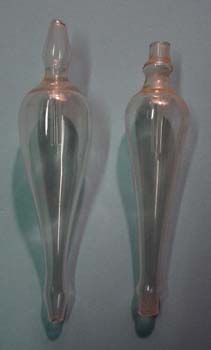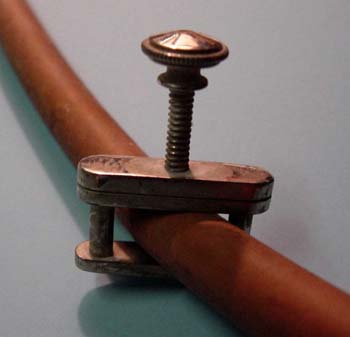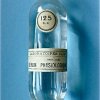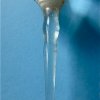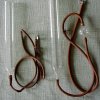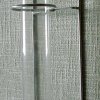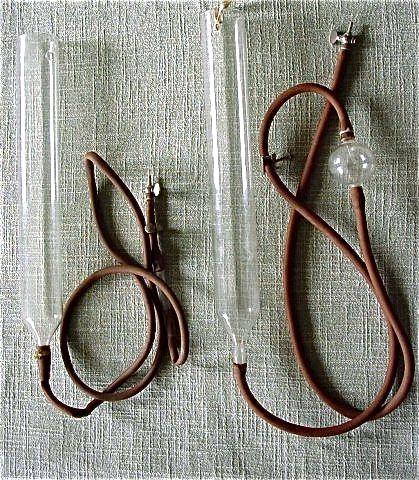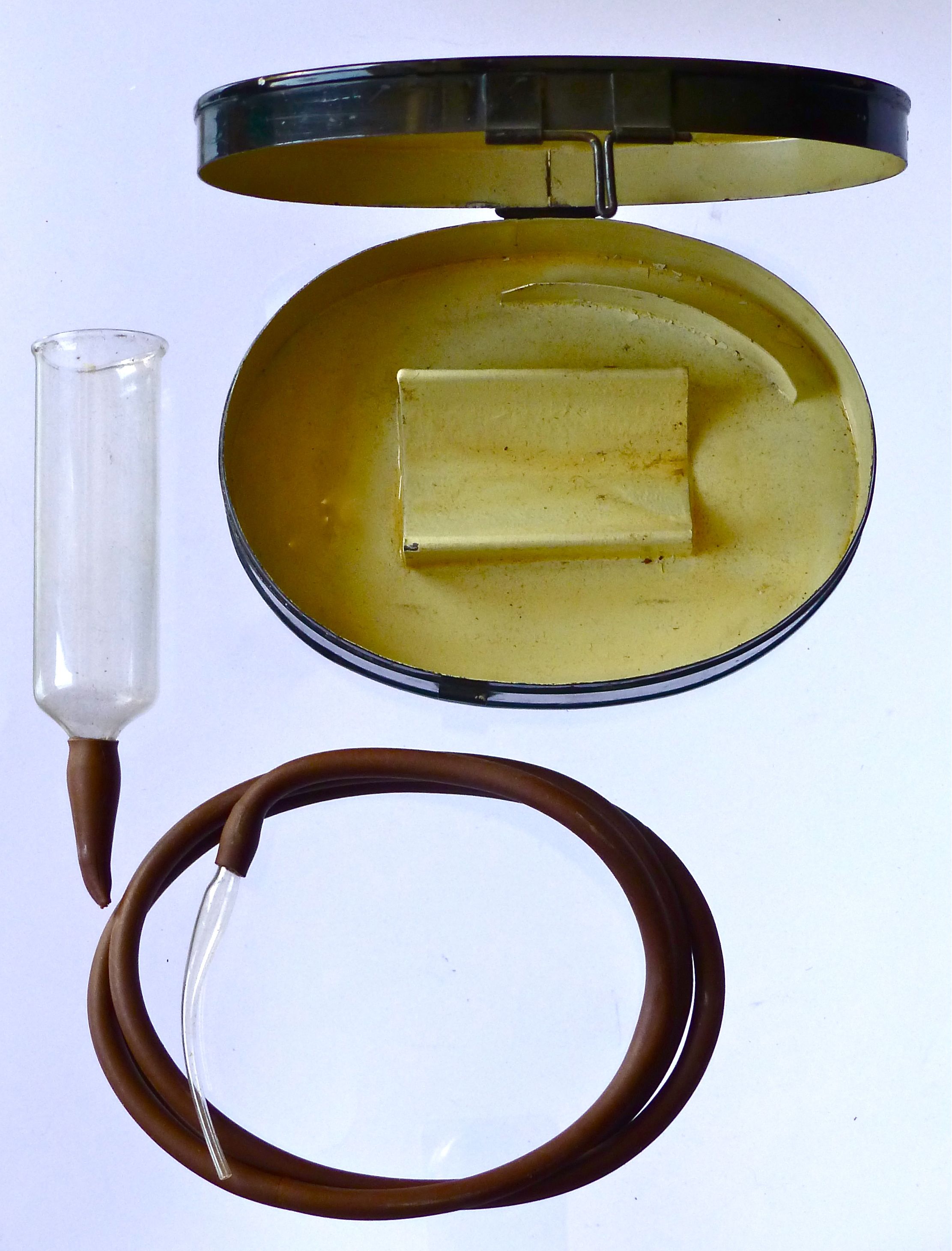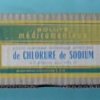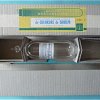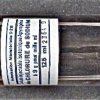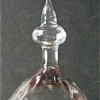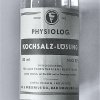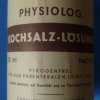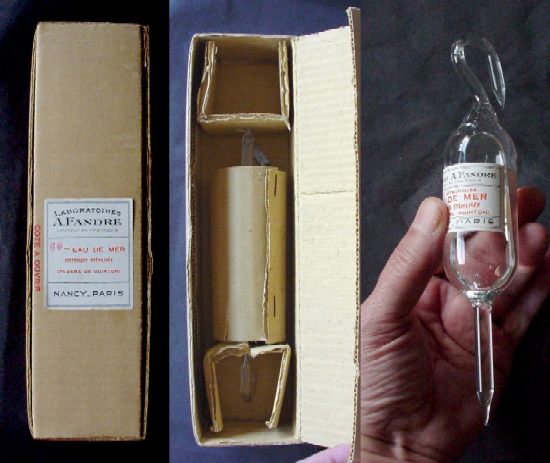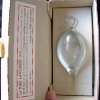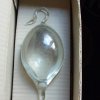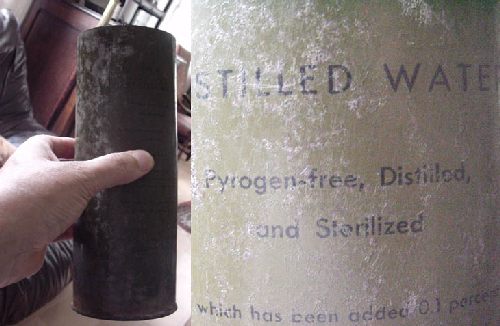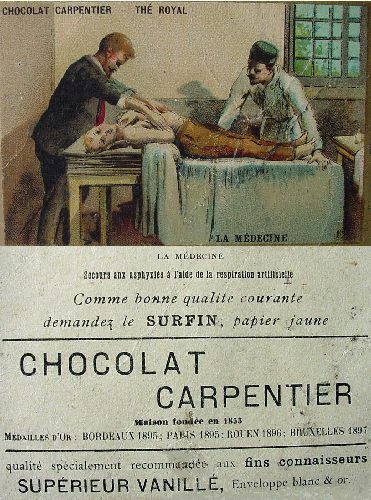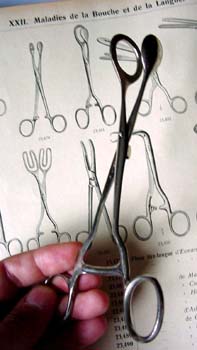Anesthesia |
||
Perfusion, drip chamber |
||
In 1911, August MARTIN (1847-1933), gynecologist in Greifswald, invented the notorious "WIGAND-MARTIN-WINCKEL" handle on the breech. Son of gynecologist Edmund Arn. MARTIN (1809-1875), invented this drip chamber, with which one was able to regulate and monitor the dripping speed of perfusions. |
Anesthesia |
||
Hose clamp |
||
The flow rate of the infusion could be regulated by turning the clamp [frz. "collier de serrage"] on the hose. |
Anesthesia |
||
Perfusion, isotonic |
||
|
Aus der geburtshilflichen Tasche des ab 1923 in Diekirch niedergelassenen Arztes Paul HETTO stammt diese 23 cm lange Infusions-Ampulle der "Laboratoires Clin" mit 125 ml Kochsalzlösung. Man beachte das klassische "Schweineschwänzchen" zum Aufhängen der Ampulle. So wie man früher mit Blutransfusionen sehr sparsam umging, so auch mit der Zufuhr von physiologischen Salzwasserlösungen. Ob solch homöopathische Mengen einen positiven Effekt hatten wage ich zu bezweifeln.
Laboratoires CLIN
|
Anesthesia |
||||
Perfusion, open cylinder |
||||
Routinely i.v. Saline infusions at the end of the 19th century were used in the wake of the work of the Leipzig surgeon Albert Sigmund LANDERER (1854-1904), who proved in 1886 that 0.6-0.7% saline solution was well tolerated even in large quantities.
|
Anästhesie |
||
Perfusion, open set |
||
Presented is a 12.5 x 9.0 cm large, black-painted metal box with latch closure - with a hand-blown, open Mini-irrigator (height 8.0 cm, diameter 2.7 cm), and a Kaoutschukschlauch with attached blunt glass needle! Unfortunately, we can not reconstruct whether a doctor infused it with tartar emetic! I see the displayed cutlery most in connection with the treatment of cholera patients. Origin of the box: Darlington / Durham / UK. No manufacturer information.
Lit.: Alexander Sudahl, Das Rote Kreuz im Königreich Württemberg. Inauguraldissertation zur Erlangung des medizinischen Doktorgrades der Medizinischen Fakultät Heidelberg der Ruprecht-Karls-Universität, 2001. |
Anesthesia |
||
Perfusion, salty (1) |
||
|
First saline infusion using closed bottles only from 1886 by Karl Hugo KRONECKER (1839-1914) in Bern.
|
Anesthesia |
||
Perfusion, salty (2) |
||
|
- On May 27, 1881, the surgeon Albert Sigmund LANDERER (1854-1904) first injected saline into a human being. The introduction of intravenous injection into the clinic was successful in postoperative therapy using a PRAVAZ syringe. LANDERER recommended a technique in which the vein had not previously been exposed by venae-sectio, but was dotted after stasis directly through the intact skin - as the doctor still does today ... - On October 10, 1881, the same LANDERER had the opportunity to make an infusion of alkaline saline solution on a patient with acute anemia - the first saline infusion in humans!
|
Anesthesia |
||
Perfusion, seawater |
||
Glass infusion bottles were introduced at the beginning of the 1950s. Long before, however, there were glass ampoules that were used as an infusion. Such an ampoule is discussed here.
|
Anesthesia |
||
Perfusion, sugar |
||
|
|
Anesthesia |
||
Plasma diluting agent |
||
This rusted tin container comes from the stocks of the US Army, a Luxembourgish farmer kept his rusty nails for years in it, and its medical significance emerges only from the printed text:
The presented tin box once contained a glass bottle of sterile water and sterile material to be used in conjunction with a second, unshaped, mold-like jug containing the dried plasma and the transfusion needle, the whole for making and infusing so-called. "restored plasma", ie restored plasma.
|
Anesthesia |
||
Resuscitation |
||
At the beginning of the 20th century, the French chocolate factory CARPENTIER participated in the vulgarization of basic medical knowledge. In the picture, the patient lies in an overstretched supine position, the doctor or helper makes with his arms a kind of wing movement. This overstretching of the body is in contradiction to an ancient method (18th century), to awaken the drowned to life: they tied them belly down (!) On a barrel that you rolled back and forth ...
The history of the revival
|
Anesthesia |
||
Tongue grasper |
||
Tongue Forceps n. MATHIEU During anesthesia, the tongue slips backwards and blocks the airways. If you do not want to or can not intubate, you should prefer the tongue with a suitable barrel pliers (models CHAMPONNIERE, MIKULICZ and BERGER with sharp claws, dull models according to ESMARCH, CUSCO, HOUZE, ASH, COLLIN, KLAUSNER, etc.). A blunt grasper is introduced, named after the French instrument maker Louis Mathieu (1817-1879), to whom we also owe a vaginal speculum and a tonsillotome.
Bibliography "Maison Mathieu , fabrique d'instruments de chirurgie. Catalogue de vente. Arsenal chirurgical : orthopédie, prothèse. Mathieu éd. , 15e édition , sd ( 1906 ) , in-8 pl. toile verte, de XVIII ( index) - 484 pp. , plus de 10.000 descriptions , accompagnées pour chaque page de 1 à 20 gravures"... |




